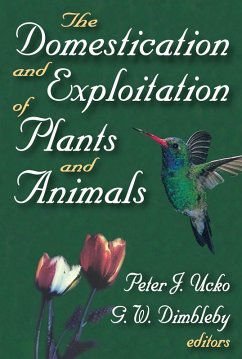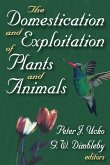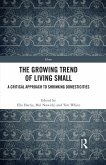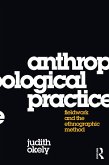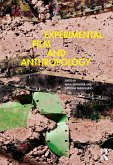G. W. Dimbleby
The Domestication and Exploitation of Plants and Animals (eBook, PDF)
54,95 €
54,95 €
inkl. MwSt.
Sofort per Download lieferbar

27 °P sammeln
54,95 €
Als Download kaufen

54,95 €
inkl. MwSt.
Sofort per Download lieferbar

27 °P sammeln
Jetzt verschenken
Alle Infos zum eBook verschenken
54,95 €
inkl. MwSt.
Sofort per Download lieferbar
Alle Infos zum eBook verschenken

27 °P sammeln
G. W. Dimbleby
The Domestication and Exploitation of Plants and Animals (eBook, PDF)
- Format: PDF
- Merkliste
- Auf die Merkliste
- Bewerten Bewerten
- Teilen
- Produkt teilen
- Produkterinnerung
- Produkterinnerung

Bitte loggen Sie sich zunächst in Ihr Kundenkonto ein oder registrieren Sie sich bei
bücher.de, um das eBook-Abo tolino select nutzen zu können.
Hier können Sie sich einloggen
Hier können Sie sich einloggen
Sie sind bereits eingeloggt. Klicken Sie auf 2. tolino select Abo, um fortzufahren.

Bitte loggen Sie sich zunächst in Ihr Kundenkonto ein oder registrieren Sie sich bei bücher.de, um das eBook-Abo tolino select nutzen zu können.
The domestication of plants and animals was one of the greatest steps forward taken by mankind
- Geräte: PC
- mit Kopierschutz
- eBook Hilfe
- Größe: 42.72MB
Andere Kunden interessierten sich auch für
![The Domestication and Exploitation of Plants and Animals (eBook, ePUB) The Domestication and Exploitation of Plants and Animals (eBook, ePUB)]() G. W. DimblebyThe Domestication and Exploitation of Plants and Animals (eBook, ePUB)54,95 €
G. W. DimblebyThe Domestication and Exploitation of Plants and Animals (eBook, ePUB)54,95 €![In the Active Voice (Routledge Revivals) (eBook, PDF) In the Active Voice (Routledge Revivals) (eBook, PDF)]() Mary DouglasIn the Active Voice (Routledge Revivals) (eBook, PDF)41,95 €
Mary DouglasIn the Active Voice (Routledge Revivals) (eBook, PDF)41,95 €![The Growing Trend of Living Small (eBook, PDF) The Growing Trend of Living Small (eBook, PDF)]() The Growing Trend of Living Small (eBook, PDF)42,95 €
The Growing Trend of Living Small (eBook, PDF)42,95 €![Anthropological Practice (eBook, PDF) Anthropological Practice (eBook, PDF)]() Judith OkelyAnthropological Practice (eBook, PDF)35,95 €
Judith OkelyAnthropological Practice (eBook, PDF)35,95 €![Caravans in Global Perspective (eBook, PDF) Caravans in Global Perspective (eBook, PDF)]() Caravans in Global Perspective (eBook, PDF)41,95 €
Caravans in Global Perspective (eBook, PDF)41,95 €![Science, Gender and the Exploitation of Animals in Britain Since 1945 (eBook, PDF) Science, Gender and the Exploitation of Animals in Britain Since 1945 (eBook, PDF)]() Catherine DuxburyScience, Gender and the Exploitation of Animals in Britain Since 1945 (eBook, PDF)44,95 €
Catherine DuxburyScience, Gender and the Exploitation of Animals in Britain Since 1945 (eBook, PDF)44,95 €![Experimental Film and Anthropology (eBook, PDF) Experimental Film and Anthropology (eBook, PDF)]() Experimental Film and Anthropology (eBook, PDF)32,95 €
Experimental Film and Anthropology (eBook, PDF)32,95 €-
-
The domestication of plants and animals was one of the greatest steps forward taken by mankind
Dieser Download kann aus rechtlichen Gründen nur mit Rechnungsadresse in A, B, BG, CY, CZ, D, DK, EW, E, FIN, F, GR, HR, H, IRL, I, LT, L, LR, M, NL, PL, P, R, S, SLO, SK ausgeliefert werden.
Produktdetails
- Produktdetails
- Verlag: Taylor & Francis eBooks
- Seitenzahl: 607
- Erscheinungstermin: 12. Juli 2017
- Englisch
- ISBN-13: 9781351483438
- Artikelnr.: 48867615
- Verlag: Taylor & Francis eBooks
- Seitenzahl: 607
- Erscheinungstermin: 12. Juli 2017
- Englisch
- ISBN-13: 9781351483438
- Artikelnr.: 48867615
- Herstellerkennzeichnung Die Herstellerinformationen sind derzeit nicht verfügbar.
G. W. Dimbleby
I: Origins of domestication
1: Environmental background
Agricultural systems, ecosystems and the origins of agriculture
The ecological background of plant domestication Introduction
Geological opportunism
Reflections on prehistoric environments in the Near East
The progenitors of wheat and barley in relation to domestication and agricultural dispersal in the Old World
2: Patterns of exploitation
The silent millennia in the origin of agriculture
Origins and ecological effects of early domestication in Iran and the Near East
Wild mammals and their potential for new domestication
Evidence for vegetation changes associated with mesolithic man in Britain
II: Methods of investigation
1: Domestication and exploitation of plants
The indirect evidence for domestication
A note on cereals in ancient Egypt
Pollen grains of Gramineae and Cerealia from Shanidar and Zawi Chemi
The archaeological evidence for the domestication of plants: methods and problems
Evidence from phylogenetic relationships of the types of bread wheat first cultivated
History and ethnography of some West Indian starches
Fruit size variability of Swiss prehistoric Malus sylvestris
2: Domestication and exploitation of animals
The genetical implications of domestication in animals
Archaeological problems and methods of recognizing animal domestication
The use of non-morphological criteria in the study of animal domestication from bones found on archaeological sites
Animal husbandry
Methodology and results of the study of the earliest domesticated animals in the Near East (Palestine)
The uses and limitations of differences in absolute size in the distinction between the bones of aurochs (Bos primigenius) and domestic cattle (Bos taurus)
A metrical distinction between sheep and goat metacarpals
Animal domestication and animal cult in dynastic Egypt
III: Regional and local evidence for domestication
Early domestic animals in India and Pakistan
Early cultivated plants in India and Pakistan
The problem of the introduction of Adansonia digitata into India
Carnivore remains from the excavations of the Jericho Tell
Some difficulties of interpreting the metrical data derived from the remains of cattle at the Roman settlement of Corstopitum
Plant remains and early farming in Jericho 1
The pattern of animal domestication in the prehistoric Near East
Animal domestication in the Neolithic cultures of the south-west part of European U.S.S.R.
Early cereal cultivation in China
Early cereal cultivation in China
IV: Studies of particular taxonomic groups
1: Plants
The origins of yam cultivation Introduction
The origin, variability and spread of the groundnut (Arachis hypogaea)
The domestication of chili peppers
Evolution of American Phaseolus beans under domestication
Some domesticated lower plants in South-east Asian food technology
2: Animals
The domestication of the horse
The exploitation of molluscs
The Mesopotamian onager as a draught animal
The domestication of the ferret
Changes in the fleece of sheep following domestication (with a note on the coat of cattle)
V: Human nutrition
Human nutrition: evolutionary perspectives
Dietary variation and the biology of earlier human populations
Archaeology and the nutritionist
Conclusion
Conclusion
1: Environmental background
Agricultural systems, ecosystems and the origins of agriculture
The ecological background of plant domestication Introduction
Geological opportunism
Reflections on prehistoric environments in the Near East
The progenitors of wheat and barley in relation to domestication and agricultural dispersal in the Old World
2: Patterns of exploitation
The silent millennia in the origin of agriculture
Origins and ecological effects of early domestication in Iran and the Near East
Wild mammals and their potential for new domestication
Evidence for vegetation changes associated with mesolithic man in Britain
II: Methods of investigation
1: Domestication and exploitation of plants
The indirect evidence for domestication
A note on cereals in ancient Egypt
Pollen grains of Gramineae and Cerealia from Shanidar and Zawi Chemi
The archaeological evidence for the domestication of plants: methods and problems
Evidence from phylogenetic relationships of the types of bread wheat first cultivated
History and ethnography of some West Indian starches
Fruit size variability of Swiss prehistoric Malus sylvestris
2: Domestication and exploitation of animals
The genetical implications of domestication in animals
Archaeological problems and methods of recognizing animal domestication
The use of non-morphological criteria in the study of animal domestication from bones found on archaeological sites
Animal husbandry
Methodology and results of the study of the earliest domesticated animals in the Near East (Palestine)
The uses and limitations of differences in absolute size in the distinction between the bones of aurochs (Bos primigenius) and domestic cattle (Bos taurus)
A metrical distinction between sheep and goat metacarpals
Animal domestication and animal cult in dynastic Egypt
III: Regional and local evidence for domestication
Early domestic animals in India and Pakistan
Early cultivated plants in India and Pakistan
The problem of the introduction of Adansonia digitata into India
Carnivore remains from the excavations of the Jericho Tell
Some difficulties of interpreting the metrical data derived from the remains of cattle at the Roman settlement of Corstopitum
Plant remains and early farming in Jericho 1
The pattern of animal domestication in the prehistoric Near East
Animal domestication in the Neolithic cultures of the south-west part of European U.S.S.R.
Early cereal cultivation in China
Early cereal cultivation in China
IV: Studies of particular taxonomic groups
1: Plants
The origins of yam cultivation Introduction
The origin, variability and spread of the groundnut (Arachis hypogaea)
The domestication of chili peppers
Evolution of American Phaseolus beans under domestication
Some domesticated lower plants in South-east Asian food technology
2: Animals
The domestication of the horse
The exploitation of molluscs
The Mesopotamian onager as a draught animal
The domestication of the ferret
Changes in the fleece of sheep following domestication (with a note on the coat of cattle)
V: Human nutrition
Human nutrition: evolutionary perspectives
Dietary variation and the biology of earlier human populations
Archaeology and the nutritionist
Conclusion
Conclusion
I: Origins of domestication; 1: Environmental background; Agricultural systems, ecosystems and the origins of agriculture; The ecological background of plant domestication Introduction; Geological opportunism; Reflections on prehistoric environments in the Near East; The progenitors of wheat and barley in relation to domestication and agricultural dispersal in the Old World; 2: Patterns of exploitation; The silent millennia in the origin of agriculture; Origins and ecological effects of early domestication in Iran and the Near East; Wild mammals and their potential for new domestication; Evidence for vegetation changes associated with mesolithic man in Britain; II: Methods of investigation; 1: Domestication and exploitation of plants; The indirect evidence for domestication; A note on cereals in ancient Egypt; Pollen grains of Gramineae and Cerealia from Shanidar and Zawi Chemi; The archaeological evidence for the domestication of plants: methods and problems; Evidence from phylogenetic relationships of the types of bread wheat first cultivated; History and ethnography of some West Indian starches; Fruit size variability of Swiss prehistoric Malus sylvestris; 2: Domestication and exploitation of animals; The genetical implications of domestication in animals; Archaeological problems and methods of recognizing animal domestication; The use of non-morphological criteria in the study of animal domestication from bones found on archaeological sites; Animal husbandry; Methodology and results of the study of the earliest domesticated animals in the Near East (Palestine); The uses and limitations of differences in absolute size in the distinction between the bones of aurochs (Bos primigenius) and domestic cattle (Bos taurus); A metrical distinction between sheep and goat metacarpals; Animal domestication and animal cult in dynastic Egypt; III: Regional and local evidence for domestication; Early domestic animals in India and Pakistan; Early cultivated plants in India and Pakistan; The problem of the introduction of Adansonia digitata into India; Carnivore remains from the excavations of the Jericho Tell; Some difficulties of interpreting the metrical data derived from the remains of cattle at the Roman settlement of Corstopitum; Plant remains and early farming in Jericho 1; The pattern of animal domestication in the prehistoric Near East; Animal domestication in the Neolithic cultures of the south-west part of European U.S.S.R.; Early cereal cultivation in China; Early cereal cultivation in China; IV: Studies of particular taxonomic groups; 1: Plants; The origins of yam cultivation Introduction; The origin, variability and spread of the groundnut (Arachis hypogaea); The domestication of chili peppers; Evolution of American Phaseolus beans under domestication; Some domesticated lower plants in South-east Asian food technology; 2: Animals; The domestication of the horse; The exploitation of molluscs; The Mesopotamian onager as a draught animal; The domestication of the ferret; Changes in the fleece of sheep following domestication (with a note on the coat of cattle); V: Human nutrition; Human nutrition: evolutionary perspectives; Dietary variation and the biology of earlier human populations; Archaeology and the nutritionist; Conclusion; Conclusion
I: Origins of domestication
1: Environmental background
Agricultural systems, ecosystems and the origins of agriculture
The ecological background of plant domestication Introduction
Geological opportunism
Reflections on prehistoric environments in the Near East
The progenitors of wheat and barley in relation to domestication and agricultural dispersal in the Old World
2: Patterns of exploitation
The silent millennia in the origin of agriculture
Origins and ecological effects of early domestication in Iran and the Near East
Wild mammals and their potential for new domestication
Evidence for vegetation changes associated with mesolithic man in Britain
II: Methods of investigation
1: Domestication and exploitation of plants
The indirect evidence for domestication
A note on cereals in ancient Egypt
Pollen grains of Gramineae and Cerealia from Shanidar and Zawi Chemi
The archaeological evidence for the domestication of plants: methods and problems
Evidence from phylogenetic relationships of the types of bread wheat first cultivated
History and ethnography of some West Indian starches
Fruit size variability of Swiss prehistoric Malus sylvestris
2: Domestication and exploitation of animals
The genetical implications of domestication in animals
Archaeological problems and methods of recognizing animal domestication
The use of non-morphological criteria in the study of animal domestication from bones found on archaeological sites
Animal husbandry
Methodology and results of the study of the earliest domesticated animals in the Near East (Palestine)
The uses and limitations of differences in absolute size in the distinction between the bones of aurochs (Bos primigenius) and domestic cattle (Bos taurus)
A metrical distinction between sheep and goat metacarpals
Animal domestication and animal cult in dynastic Egypt
III: Regional and local evidence for domestication
Early domestic animals in India and Pakistan
Early cultivated plants in India and Pakistan
The problem of the introduction of Adansonia digitata into India
Carnivore remains from the excavations of the Jericho Tell
Some difficulties of interpreting the metrical data derived from the remains of cattle at the Roman settlement of Corstopitum
Plant remains and early farming in Jericho 1
The pattern of animal domestication in the prehistoric Near East
Animal domestication in the Neolithic cultures of the south-west part of European U.S.S.R.
Early cereal cultivation in China
Early cereal cultivation in China
IV: Studies of particular taxonomic groups
1: Plants
The origins of yam cultivation Introduction
The origin, variability and spread of the groundnut (Arachis hypogaea)
The domestication of chili peppers
Evolution of American Phaseolus beans under domestication
Some domesticated lower plants in South-east Asian food technology
2: Animals
The domestication of the horse
The exploitation of molluscs
The Mesopotamian onager as a draught animal
The domestication of the ferret
Changes in the fleece of sheep following domestication (with a note on the coat of cattle)
V: Human nutrition
Human nutrition: evolutionary perspectives
Dietary variation and the biology of earlier human populations
Archaeology and the nutritionist
Conclusion
Conclusion
1: Environmental background
Agricultural systems, ecosystems and the origins of agriculture
The ecological background of plant domestication Introduction
Geological opportunism
Reflections on prehistoric environments in the Near East
The progenitors of wheat and barley in relation to domestication and agricultural dispersal in the Old World
2: Patterns of exploitation
The silent millennia in the origin of agriculture
Origins and ecological effects of early domestication in Iran and the Near East
Wild mammals and their potential for new domestication
Evidence for vegetation changes associated with mesolithic man in Britain
II: Methods of investigation
1: Domestication and exploitation of plants
The indirect evidence for domestication
A note on cereals in ancient Egypt
Pollen grains of Gramineae and Cerealia from Shanidar and Zawi Chemi
The archaeological evidence for the domestication of plants: methods and problems
Evidence from phylogenetic relationships of the types of bread wheat first cultivated
History and ethnography of some West Indian starches
Fruit size variability of Swiss prehistoric Malus sylvestris
2: Domestication and exploitation of animals
The genetical implications of domestication in animals
Archaeological problems and methods of recognizing animal domestication
The use of non-morphological criteria in the study of animal domestication from bones found on archaeological sites
Animal husbandry
Methodology and results of the study of the earliest domesticated animals in the Near East (Palestine)
The uses and limitations of differences in absolute size in the distinction between the bones of aurochs (Bos primigenius) and domestic cattle (Bos taurus)
A metrical distinction between sheep and goat metacarpals
Animal domestication and animal cult in dynastic Egypt
III: Regional and local evidence for domestication
Early domestic animals in India and Pakistan
Early cultivated plants in India and Pakistan
The problem of the introduction of Adansonia digitata into India
Carnivore remains from the excavations of the Jericho Tell
Some difficulties of interpreting the metrical data derived from the remains of cattle at the Roman settlement of Corstopitum
Plant remains and early farming in Jericho 1
The pattern of animal domestication in the prehistoric Near East
Animal domestication in the Neolithic cultures of the south-west part of European U.S.S.R.
Early cereal cultivation in China
Early cereal cultivation in China
IV: Studies of particular taxonomic groups
1: Plants
The origins of yam cultivation Introduction
The origin, variability and spread of the groundnut (Arachis hypogaea)
The domestication of chili peppers
Evolution of American Phaseolus beans under domestication
Some domesticated lower plants in South-east Asian food technology
2: Animals
The domestication of the horse
The exploitation of molluscs
The Mesopotamian onager as a draught animal
The domestication of the ferret
Changes in the fleece of sheep following domestication (with a note on the coat of cattle)
V: Human nutrition
Human nutrition: evolutionary perspectives
Dietary variation and the biology of earlier human populations
Archaeology and the nutritionist
Conclusion
Conclusion
I: Origins of domestication; 1: Environmental background; Agricultural systems, ecosystems and the origins of agriculture; The ecological background of plant domestication Introduction; Geological opportunism; Reflections on prehistoric environments in the Near East; The progenitors of wheat and barley in relation to domestication and agricultural dispersal in the Old World; 2: Patterns of exploitation; The silent millennia in the origin of agriculture; Origins and ecological effects of early domestication in Iran and the Near East; Wild mammals and their potential for new domestication; Evidence for vegetation changes associated with mesolithic man in Britain; II: Methods of investigation; 1: Domestication and exploitation of plants; The indirect evidence for domestication; A note on cereals in ancient Egypt; Pollen grains of Gramineae and Cerealia from Shanidar and Zawi Chemi; The archaeological evidence for the domestication of plants: methods and problems; Evidence from phylogenetic relationships of the types of bread wheat first cultivated; History and ethnography of some West Indian starches; Fruit size variability of Swiss prehistoric Malus sylvestris; 2: Domestication and exploitation of animals; The genetical implications of domestication in animals; Archaeological problems and methods of recognizing animal domestication; The use of non-morphological criteria in the study of animal domestication from bones found on archaeological sites; Animal husbandry; Methodology and results of the study of the earliest domesticated animals in the Near East (Palestine); The uses and limitations of differences in absolute size in the distinction between the bones of aurochs (Bos primigenius) and domestic cattle (Bos taurus); A metrical distinction between sheep and goat metacarpals; Animal domestication and animal cult in dynastic Egypt; III: Regional and local evidence for domestication; Early domestic animals in India and Pakistan; Early cultivated plants in India and Pakistan; The problem of the introduction of Adansonia digitata into India; Carnivore remains from the excavations of the Jericho Tell; Some difficulties of interpreting the metrical data derived from the remains of cattle at the Roman settlement of Corstopitum; Plant remains and early farming in Jericho 1; The pattern of animal domestication in the prehistoric Near East; Animal domestication in the Neolithic cultures of the south-west part of European U.S.S.R.; Early cereal cultivation in China; Early cereal cultivation in China; IV: Studies of particular taxonomic groups; 1: Plants; The origins of yam cultivation Introduction; The origin, variability and spread of the groundnut (Arachis hypogaea); The domestication of chili peppers; Evolution of American Phaseolus beans under domestication; Some domesticated lower plants in South-east Asian food technology; 2: Animals; The domestication of the horse; The exploitation of molluscs; The Mesopotamian onager as a draught animal; The domestication of the ferret; Changes in the fleece of sheep following domestication (with a note on the coat of cattle); V: Human nutrition; Human nutrition: evolutionary perspectives; Dietary variation and the biology of earlier human populations; Archaeology and the nutritionist; Conclusion; Conclusion
